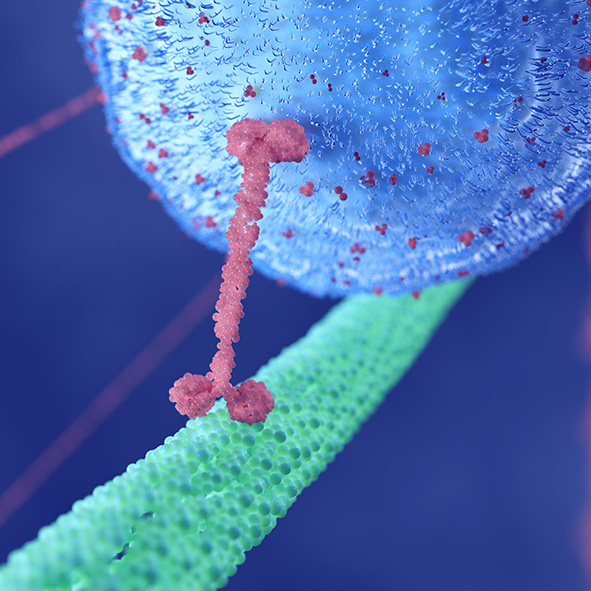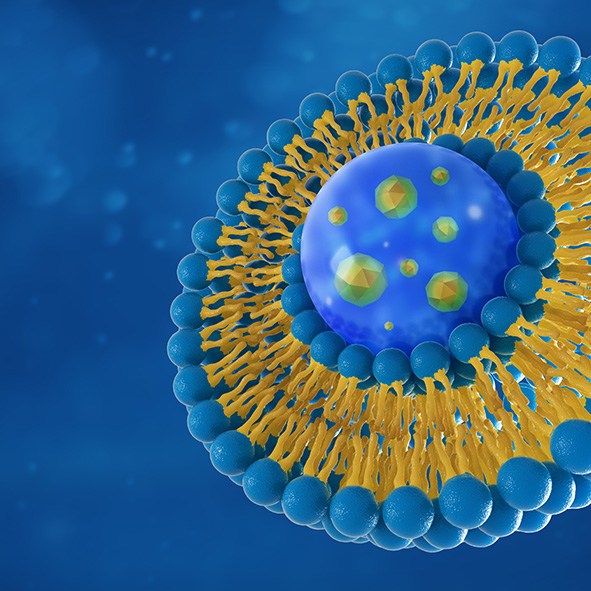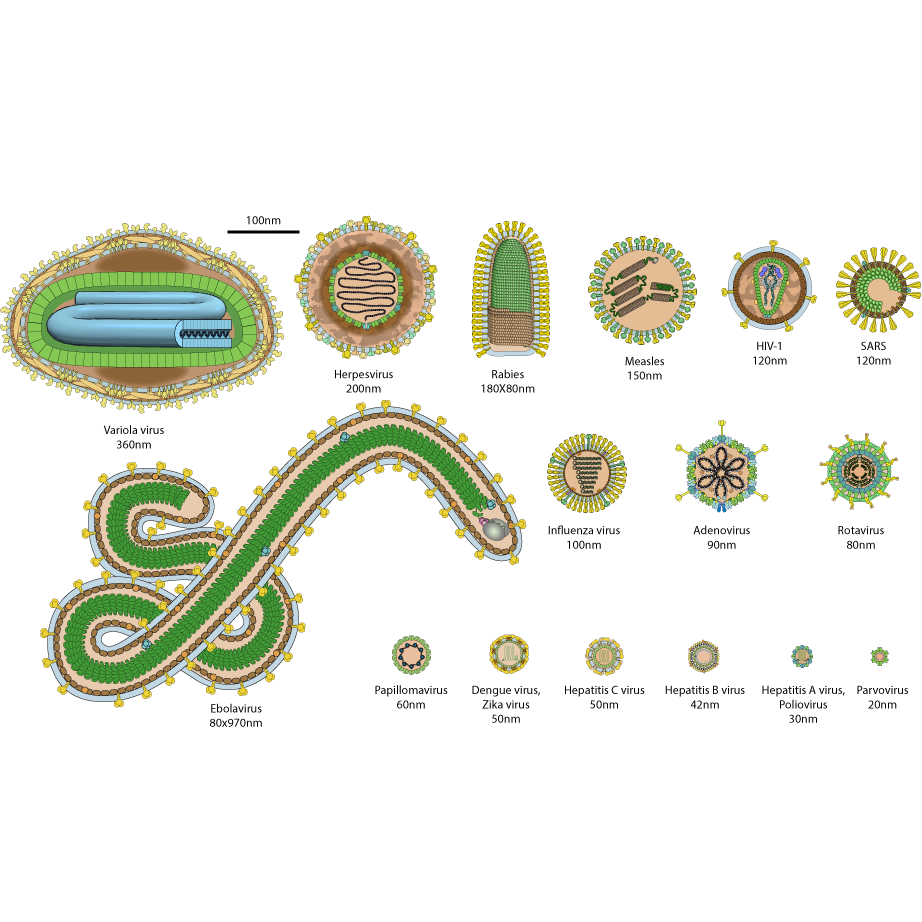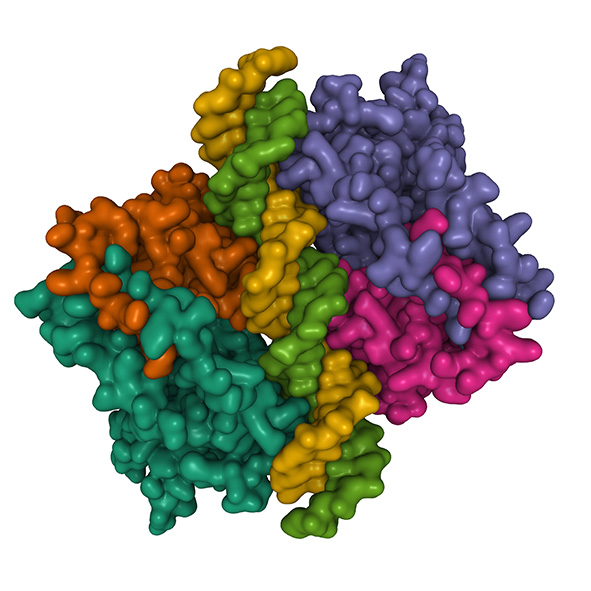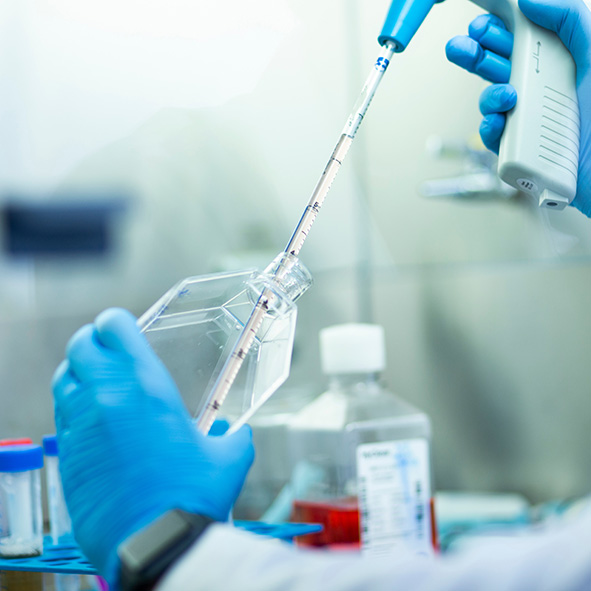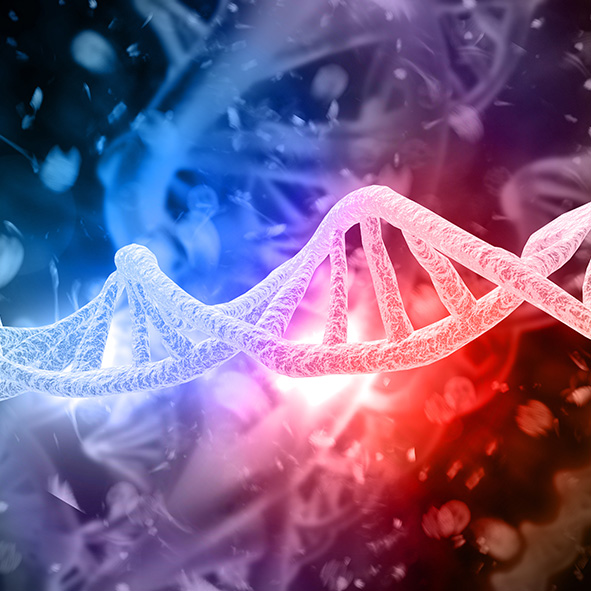Spectradyne
ARC
Nanoparticle Size, Concentration and Phenotype Analyser
- Measurement range 50 nm – 10 µm
- MRPS & simultaneous single-particle fluorescence
- Counts & sizes individual sizes
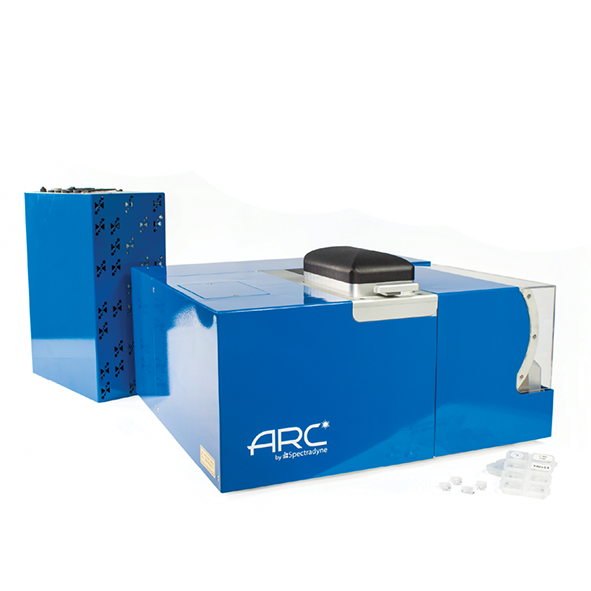
Spectradynes latest, groundbreaking instrument. Accurate particle size, concentration and phenotype analysis
Fluorescence Microfluidic Resistive Pulse Sensing (F-MRPS, Spectradyne) was used to measure Vesi-Ref CD63 GFP (Vesiculab, UK) without modification and after staining with PE-anti-CD63. F-MRPS detects and measures the size and concentration of nanoparticles using MRPS, an electrical technique, while simultaneously measuring the fluorescence of each particle in up to 3 optical bands. Particle detection and fluorescent measurements are triggered using the MRPS signal, ensuring that each event represents a physical particle larger than the size limit of detection of the cartridge used (65 nm in this case). A one-time factory cross-calibration of the instrument to NIST-traceable MESF standard beads enables particle brightness to be reported by default in traceable units (ERF or MESF when appropriate).
The main figure shows particle concentration vs. size for all particles in the unstained sample (purple), all particles in the stained sample (blue), and subpopulations of the stained sample after gating GFP+ (green), CD63+ (yellow), and double-positive GFP+/CD63+ (red) populations. While the overall particle size distribution displays an approximate power-law dependence of concentration on size that extends to the lower size limit of detection for this cartridge, the fluorescent subpopulations each show the presence of a peak near 75 nm diameter. The 2D scatter plot (inset) shows the brightness of each particle in FITC and PE channels. Absolute concentration and relative abundance of particles are reported for each quadrant, the bounds of which are defined by the fluorescence limits of detection of each channel: 30 FITC ERF and 2.5 PE MESF.
-
Key Features
- Gives particle size distribution and absolute concentration, as well as single-particle fluorescence
- Particle sizes: 50 nm to 10 micron diameters
- Concentration range: approx. 104 — 1012 particles/mL
- Excitation Laser Wavelength: 488nm
- Counts & sizes individual particles
- High resolution size distributions
- Max particle detection rate: approx. 10,000 particles/s
- Can measure any material type (transparent & opaque, conducting & insulating)
- Small bench top footprint
- Instrument control interface: USB to Windows
-
Technical Specs
TechnologyMicrofluidic resistive pulse sensing and simultaneous single-particle fluorescence. No optical index contrast or other resolution issues
CartridgesDisposable microfluidic cartridges with nanoscale features
Particle size analysis range50 nm to 10 micron diameters
Concentration rangeapprox. 104 — 1012 particles/mL
Excitation Laser Wavelength488nm
OtherBench-top instrument with external laptop or PC
Instrument Dimensions:20″ wide × 20″ deep × 9″ high (500 mm wide × 500 mm deep × 155 mm high)
Power Supply Dimensions:11.8″ wide x 15.6″ deep x 6.1″ high (300mm wide x 396mm deep x 155mm high)
WeightAbout 30 lbs (14 kg)
Power:110V & 60 Hz | 220V & 50 Hz
-
Applications
-
Cartridges
- Eliminates contamination and cleaning requirements
- Sample volume required: 2-3 microliters
- Sizing precision: < ±5%
- On-board filtering: no sample pre-filtering required
- Compact and easy-to-use cartridge design
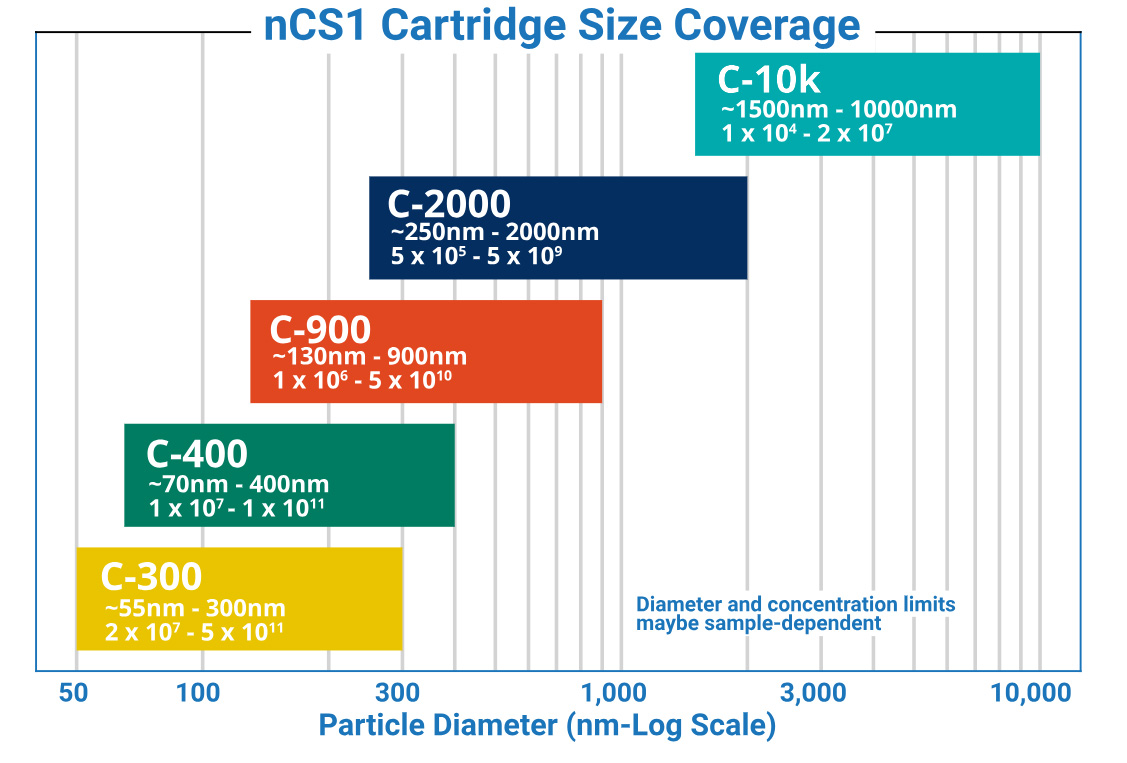
Not sure if it’s the right instrument?
No worries, send us a sample and we will test it for you
Send a sample-
Outstanding service

I have been using Meritics for a number of years and they always provide outstanding service and support.
They have a rapid response turnarounds and are very knowledgeable of the techniques and products they provide.LeanneB-375
-
Good service, very helpful

We use Meritics for the PM service and installation of all our FlowCams . Megan has been coming to our site for a number of years. She is very efficient in her work, but most of all Megan is very helpful. We have had issues with one of instruments after the install and Megan did her utmost to try and solve it while on site, even though it wasn’t solved Megan has been in contact with the supplier of the instrument to try and solve this problem for us.
SophieH-2201
-
Job done in a friendly manner

Booking engineer visits is always easy. David Lowe, Meritics engineer is always very friendly.
ThierryN
-
Service/calibration visit

Excellent service, arrived on time, polite, friendly and informative.
NathamM-270
-
5 Stars

Excellent service from an excellent company. Would recommend them to anyone.
BarryH-480
-
Good Service

David, our service engineer as usual was good at communicating and setting up the recent service appointment, he arrived on time, did the service promptly and informed me of any problems. Friendly and helpful
TomA-446
-
Superb and prompt service

I have used this company through the laboratory I work for frequently. We specialise in soil analysis, and Meritics were chosen as they have extensive knowledge of the instruments we use. We have several laser particle diffraction analysers with a service contract, and service is always very prompt and meticulous….
JamesG-2483
-
Good experience over two years

Meritics have covered the annual servicing of our Multisizer 4e instrument since we purchased it from them just over two years ago. The application scientist who performed the servicing was friendly, knowledgeable, and extremely helpful, happily answering a barrage of questions about how best to use and maintain the instrument. All my interactions with Meritics staff have been positive. I would happily recommend them.
RajG-62
-
Fully committed to customer service

Service second to none, both units serviced and all questions answers by engineer while on site.
RichardA-786
-
Highly recommend Meritics for equipment purchases and aftercare services

After owning one of our instruments for over 8 Years which was purchased from Meritics, it suffered its first breakdown. Upon contacting Meritics, I was instantly put through to an engineer who was very helpful. Upon inspection of the manual, it was decided that it would be more cost effective to have a Meritics engineer visit. The Meritics staff were very communicative and kept me up to date.
-
Excellent Service

Lovely, friendly and extremely helpful. David and his team are always on call with advise and are very easy to work with and are always happy to help.
NaomiT-64
-
Service of lab equipment

Excellent service. Friendly and professional service was provided in a timely manner to the expected standard.
NathanM-270
-
Excellent

Excellent communication. Updates given well in advance. Very polite staff and engineers.
NathanM-270
-
Multisizer 4e install at pharmaceutical company

2 people helped with the install of a Multisizer 4e. They were both very professional and friendly, answering any questions that I had. The installation was quick and the attention to good documentation practice was exceptional.
Chloel-9
-
Service of Beckman Coulter instruments

Always a pleasure to welcome the Meritics service engineer, who is knowledgeable, personable and extremely competent.
NeilT-394
-
Professional

Friendly and collaborative staff, provided a very good service.
SamK-403
-
Professional, Customer-oriented, fast service

We had issues with one of the aperture tubes provided by Meritics on a Friday afternoon, while very pressed for a review deadline. Meritics handled our inquiries very fast and professionally and helped us out by shipping us their spare tube to use in the mean time free of charge, while we waited for our new tube to arrive. Communication was very pleasant.
VeerleB
-
Very helpful and prompt

I emailed for some technical help and also to get some spares and both the engineer (David) and purchasing (Sophie) were very prompt to respond and helpful. We do have a service contract but I appreciated being able to email the engineer directly.
AlexH-474
-
Excellent Service

Used Meritics to conduct particle size distribution by laser diffraction. Service as last time, is very quick, well priced and professional.
I would highly recommend
GavinR-101
-
Excellent and Friendly Service

Always a pleasure to deal with the people at Meritics Ltd. They understand the importance of our work and the fact that our research projects have deadlines that need to be met. Consequently, problems are dealt with very quickly and professionally and they are willing to go that one step further to make sure their supply chain problems don’t become our problems. Thank you to the team for their support. It is greatly appreciated.
JanetH-255
